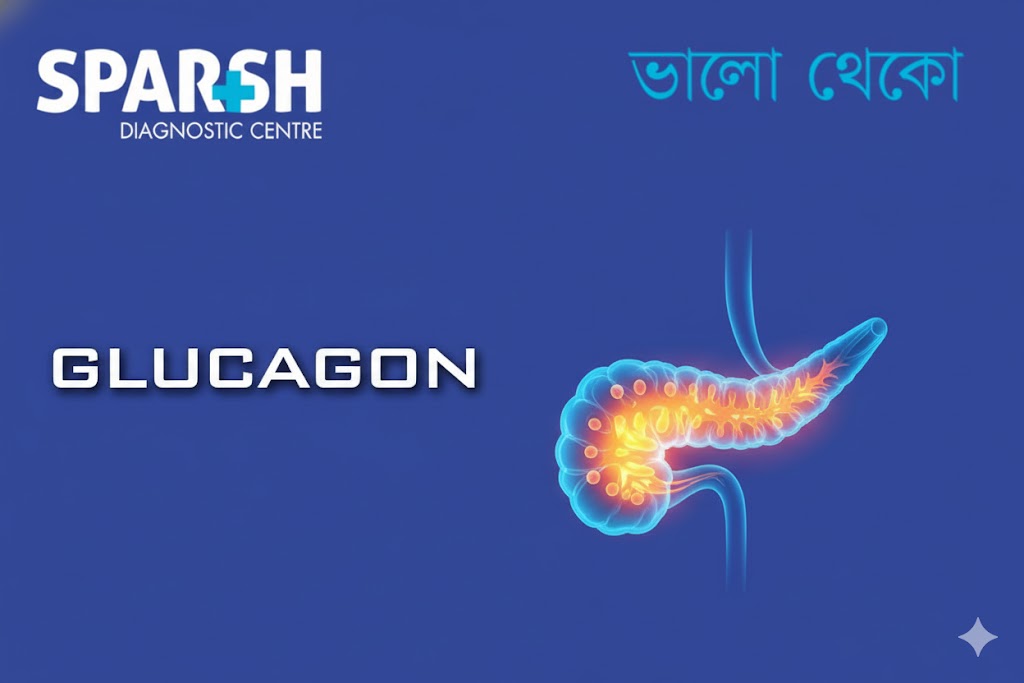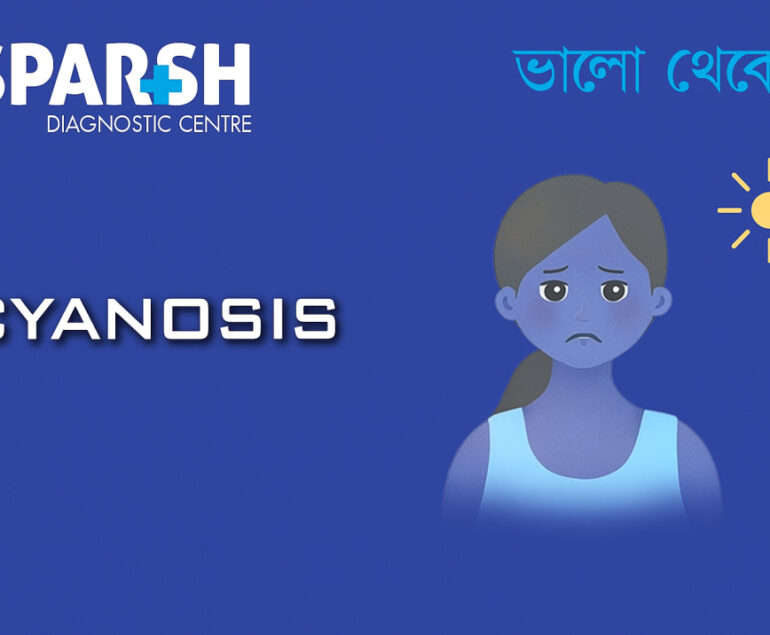Blood sugar regulation is a delicate balancing act managed by two key hormones — insulin and glucagon. While insulin lowers blood glucose levels, glucagon performs the opposite function — it raises blood sugar when it dips too low. Produced by the pancreas, glucagon is essential for preventing hypoglycemia and ensuring a steady supply of energy to the body, especially between meals or during fasting.
In this blog, we’ll explore what glucagon is, how it functions, when it’s used medically, and how imbalances can affect your health.
What Is Glucagon?
Glucagon is a peptide hormone produced by the alpha cells in the islets of Langerhans of the pancreas. Its primary role is to increase blood glucose levels by signaling the liver to convert stored glycogen into glucose — a process known as glycogenolysis.
In simpler terms, while insulin helps store glucose, glucagon helps release it when your body needs energy.
The Role of Glucagon in the Body
Glucagon plays a key role in maintaining glucose homeostasis — a state where your blood sugar stays within a healthy range.
Here’s how it works step-by-step:
Blood Sugar Drops:
When blood glucose levels fall below normal (such as after exercise or fasting), the pancreas detects this change.Glucagon Release:
Alpha cells release glucagon into the bloodstream.Liver Activation:
The liver receives the glucagon signal and breaks down glycogen (stored glucose) into glucose.Glucose Release:
The liver releases glucose into the blood, restoring normal levels.Balance Restored:
As glucose levels normalize, glucagon secretion decreases, maintaining equilibrium.
This system works continuously to ensure that your brain and muscles receive adequate glucose, even when you haven’t eaten for hours.
Glucagon vs. Insulin: The Balancing Hormones
| Feature | Glucagon | Insulin |
|---|---|---|
| Produced by | Alpha cells of pancreas | Beta cells of pancreas |
| Function | Raises blood glucose | Lowers blood glucose |
| Main action | Stimulates glycogen breakdown | Promotes glucose storage |
| Target organ | Liver | Liver, muscles, fat cells |
| Released when | Blood sugar is low | Blood sugar is high |
Glucagon and insulin work as metabolic opposites, maintaining blood sugar within a narrow range. Any disruption in their balance can lead to disorders like hypoglycemia or diabetes mellitus.
How Glucagon Works in Glucose Metabolism
Beyond glycogen breakdown, glucagon also influences other pathways:
Gluconeogenesis: Glucagon promotes the formation of glucose from non-carbohydrate sources like amino acids and fats.
Lipolysis: It stimulates the breakdown of fats into fatty acids for energy.
Ketogenesis: In prolonged fasting, glucagon helps produce ketone bodies — an alternative energy source for the brain.
These combined actions ensure survival during fasting or intense physical activity by maintaining a steady energy supply.
Glucagon and Diabetes
Glucagon plays a crucial role in diabetes management — both Type 1 and Type 2 diabetes.
1. Type 1 Diabetes
In Type 1 diabetes, insulin production is minimal or absent. Without insulin, glucagon’s effects can become excessive, causing high blood sugar (hyperglycemia). During insulin therapy, however, if blood sugar drops too low (hypoglycemia), glucagon injections can be lifesaving.
2. Type 2 Diabetes
In Type 2 diabetes, the pancreas often produces too much glucagon, contributing to insulin resistance and high blood glucose levels. Medications that suppress glucagon release can help maintain balance.
Medical Uses of Glucagon
1. Emergency Treatment for Hypoglycemia
Glucagon injections are used when a person with diabetes experiences severe hypoglycemia and cannot eat or drink sugar.
Glucagon Injection Kits:
Traditional Injectable Kits: Require mixing powder and liquid before use.
Glucagon Autoinjectors/Nasal Sprays: Newer, easier-to-use devices for emergency use.
How It Works:
After injection, glucagon rapidly raises blood glucose levels within 10–15 minutes by triggering glycogen breakdown in the liver.
2. Diagnostic Use
Glucagon is also used during radiologic imaging or endoscopic procedures to:
Temporarily relax the stomach and intestines
Reduce bowel movement during scans
Help visualize organs more clearly
3. Treatment of Beta-Blocker Overdose
In cases of beta-blocker or calcium channel blocker overdose, glucagon acts as a cardiac stimulant, improving heart rate and contractility.
Glucagon Deficiency
Though rare, glucagon deficiency can occur due to pancreatic diseases, tumors, or surgical removal of the pancreas.
Symptoms Include:
Poor tolerance to fasting
Treatment involves dietary management and treating underlying causes.
Glucagon Excess (Hyperglucagonemia)
Excess glucagon may result from a glucagonoma, a rare tumor of the pancreas.
Symptoms Include:
High blood sugar (diabetes-like symptoms)
Necrolytic migratory erythema (a red, blistering skin rash)
Treatment options include surgical removal of the tumor, medications to suppress glucagon, and management of diabetes symptoms.
Glucagon and the Liver
The liver is the primary target of glucagon action. It performs two critical roles in glucose metabolism under glucagon stimulation:
Glycogenolysis: Breakdown of glycogen into glucose.
Gluconeogenesis: Synthesis of glucose from non-carbohydrate sources.
This ensures that even in the absence of dietary glucose, your body maintains enough fuel for vital organs — especially the brain.
How Glucagon Affects Other Organs
Heart: Increases heart rate and force of contraction.
Kidneys: Promotes urea production during gluconeogenesis.
Adipose Tissue: Encourages fat breakdown.
Intestines: Slows down motility to preserve energy during fasting.
Synthetic Glucagon: Modern Forms and Delivery
Recent innovations have made glucagon therapy safer and easier for patients and caregivers.
Common Forms:
Glucagon Emergency Kit (Injectable powder + solvent)
Pre-filled Glucagon Autoinjectors
Nasal Glucagon Spray
Administration Tips:
Used when the patient is unconscious or unable to swallow.
After injection, position the person on their side to prevent choking.
Once awake, they should consume a carbohydrate-rich snack.
Lifestyle and Diet Tips for Healthy Glucagon Function
You can naturally support your glucagon-insulin balance with healthy habits:
Eat Balanced Meals: Include complex carbs, proteins, and healthy fats.
Avoid Skipping Meals: Prevents sudden drops in blood sugar.
Stay Active: Regular exercise improves insulin sensitivity and glucagon balance.
Manage Stress: High cortisol levels can disrupt glucose regulation.
Avoid Excess Alcohol: Alcohol can suppress glucagon and lead to hypoglycemia.
Glucagon in Research and New Therapies
Modern research is exploring glucagon analogs and dual-hormone therapies to manage diabetes more effectively.
1. Dual Hormone Pumps
These devices combine insulin and glucagon delivery, mimicking the body’s natural regulation system.
2. Glucagon Receptor Blockers
Experimental drugs that block glucagon receptors may help reduce blood glucose in Type 2 diabetes.
3. Glucagon-Like Peptide-1 (GLP-1)
GLP-1, though related to glucagon, has opposite effects — it stimulates insulin and suppresses glucagon. GLP-1 agonist drugs (like semaglutide) are already widely used in diabetes and obesity treatment.
When to See a Doctor
Seek medical advice if you experience:
Unexplained episodes of low or high blood sugar
Persistent fatigue or dizziness
Sudden weight loss
Early detection of hormonal imbalances ensures better management and prevents complications.
Glucagon is the body’s natural defense against dangerously low blood sugar levels. Working hand-in-hand with insulin, it keeps your energy levels stable throughout the day. Beyond glucose control, glucagon also plays roles in fat metabolism, heart function, and even medical diagnostics.
Understanding glucagon — and maintaining a balance between insulin and glucagon — is essential for healthy metabolism and diabetes management.
Frequently Asked Questions (FAQ)
1. What is glucagon and what does it do?
Glucagon is a hormone produced by the pancreas that raises blood sugar levels by prompting the liver to release stored glucose.
2. When is glucagon used medically?
It’s used in emergencies to treat severe hypoglycemia, and sometimes during diagnostic imaging or treatment of certain overdoses.
3. How long does it take for glucagon to work?
Glucagon injections usually begin to raise blood sugar levels within 10–15 minutes.
4. Can glucagon be given to someone who is unconscious?
Yes. In fact, glucagon is primarily used when a person is unconscious or unable to swallow during severe hypoglycemia.
5. What are the side effects of glucagon injections?
Common side effects include nausea, vomiting, and headache. Rarely, allergic reactions or high blood sugar can occur.
6. How does glucagon differ from insulin?
While insulin lowers blood sugar, glucagon raises it. Both hormones are vital for maintaining stable glucose levels.
7. Can non-diabetic people have glucagon problems?
Yes, conditions like glucagonoma or pancreatic diseases can affect glucagon levels even in non-diabetic individuals.
8. How should glucagon be stored?
Glucagon kits should be kept at room temperature, away from moisture and direct light. Always check expiration dates before use.
9. Is glucagon safe during pregnancy?
Glucagon is generally considered safe for emergency use during pregnancy, but should always be administered under medical advice.
10. Can diet affect glucagon levels?
Yes. High-protein and low-carbohydrate diets can increase glucagon secretion, while high-carb meals suppress it.
Glucagon may not get as much attention as insulin, but it’s equally vital in maintaining metabolic balance. Whether you’re managing diabetes or simply aiming for better health, understanding the role of glucagon can help you make smarter dietary and lifestyle choices.
If you or a loved one experience symptoms of abnormal blood sugar levels, consult a healthcare provider or visit Sparsh Diagnostic Centre for accurate testing and timely management.
#BhaloTheko
Disclaimer:
No content on this site, regardless of date, should ever be used as a substitute for direct medical advice from your doctor or other qualified clinician.

![]()





